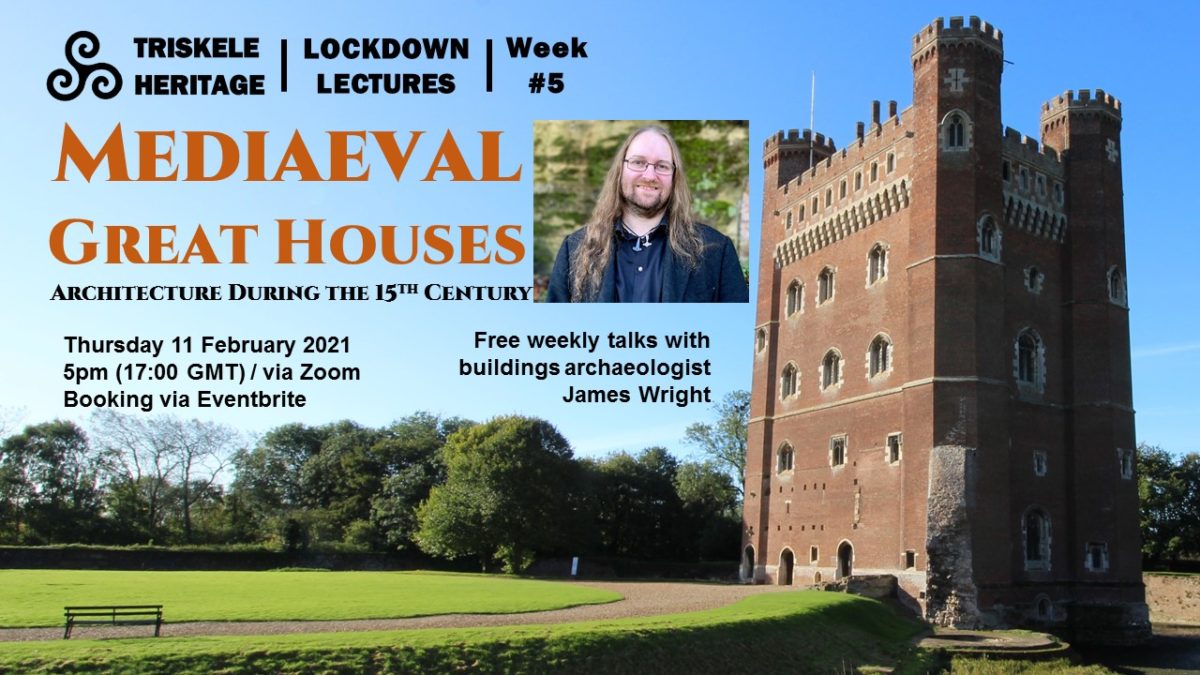With the onset of Britain’s third covid-19 lockdown within a year, Triskele Heritage will be stepping up to try and provide some (hopefully) entertaining and informative free public talks. The weekly lockdown lectures will feature the fruits of our research so you can be sure that the content will all be bang up to date!
Each week we will host a lockdown lecture freely accessible to anyone with a web connection via Zoom. All you need to do is register via Eventbrite and – when the time for the talk rolls around – grab your favourite beverage of choice, get comfy and enjoy.
Our next event will take place at 17:00GMT on Thursday 11 February 2021 and will focus on Mediaeval Great Houses – Architecture During the 15th Century.
Booking is now available via Eventbrite.

Due to our licensing agreement with Zoom tickets for each event will be limited to 495 places. If you cannot make it after booking, please do return your ticket so that someone else can enjoy the talk instead.
Please note that this is a live event only and there will not be a recording of the talk available afterwards.
If you have a question about the event – in the first instance please see our FAQs section. The answer will almost certainly be in there.
More information on the talk
Architecture During the Fifteenth Century
During August 1453, Henry VI suffered a debilitating setback in his mental health which left him in a catatonic stupor. As he languished in the rambling rural palace of Clarendon in Wiltshire, England slid inexorably towards civil war.
Henry left few lasting achievements, however, he did lavish great expense on his building projects at Eton College and King’s College, Cambridge. Whilst the king concentrated on educational institutions, his courtiers began work on buildings which fundamentally altered the face of English architecture for over a century.
The new fashions often demanded brick construction, residential great towers or gatehouses and regular courtyard plans. Whilst touching on a number of sites, this lecture examines the contrasts between Lord Cromwell’s work at Tattershall, Archbishop Bourchier’s construction at Knole and Henry’s own building at Eton.

